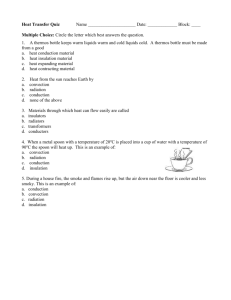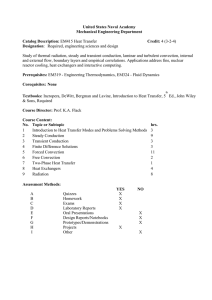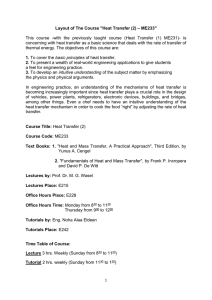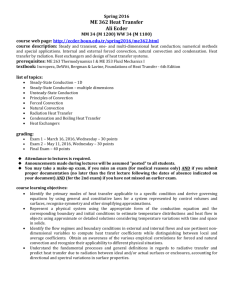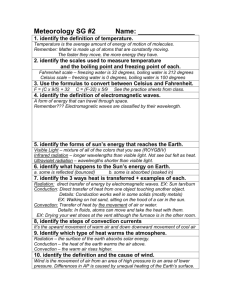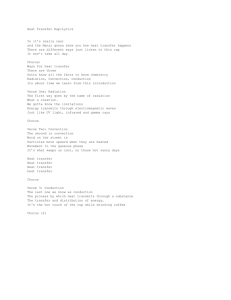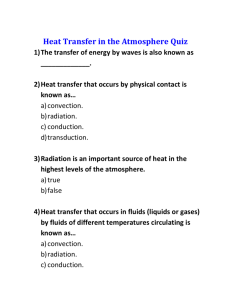MECH3310 Heat Transfer
advertisement
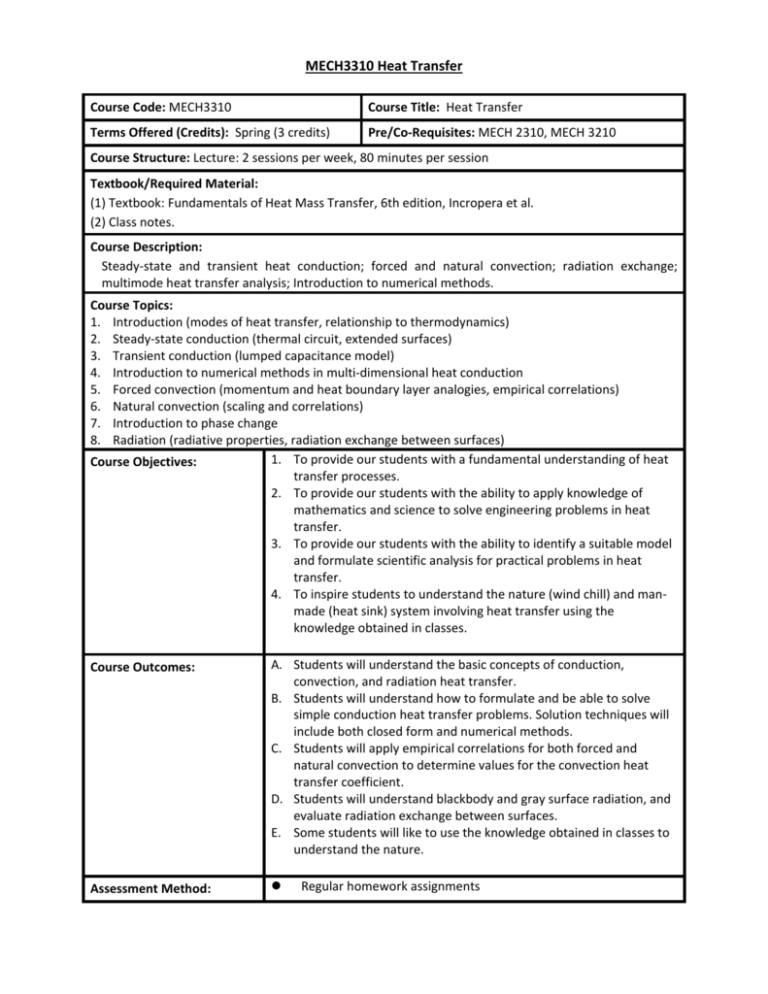
MECH3310 Heat Transfer Course Code: MECH3310 Course Title: Heat Transfer Terms Offered (Credits): Spring (3 credits) Pre/Co-Requisites: MECH 2310, MECH 3210 Course Structure: Lecture: 2 sessions per week, 80 minutes per session Textbook/Required Material: (1) Textbook: Fundamentals of Heat Mass Transfer, 6th edition, Incropera et al. (2) Class notes. Course Description: Steady-state and transient heat conduction; forced and natural convection; radiation exchange; multimode heat transfer analysis; Introduction to numerical methods. Course Topics: 1. Introduction (modes of heat transfer, relationship to thermodynamics) 2. Steady-state conduction (thermal circuit, extended surfaces) 3. Transient conduction (lumped capacitance model) 4. Introduction to numerical methods in multi-dimensional heat conduction 5. Forced convection (momentum and heat boundary layer analogies, empirical correlations) 6. Natural convection (scaling and correlations) 7. Introduction to phase change 8. Radiation (radiative properties, radiation exchange between surfaces) 1. To provide our students with a fundamental understanding of heat Course Objectives: transfer processes. 2. To provide our students with the ability to apply knowledge of mathematics and science to solve engineering problems in heat transfer. 3. To provide our students with the ability to identify a suitable model and formulate scientific analysis for practical problems in heat transfer. 4. To inspire students to understand the nature (wind chill) and manmade (heat sink) system involving heat transfer using the knowledge obtained in classes. Course Outcomes: A. Students will understand the basic concepts of conduction, convection, and radiation heat transfer. B. Students will understand how to formulate and be able to solve simple conduction heat transfer problems. Solution techniques will include both closed form and numerical methods. C. Students will apply empirical correlations for both forced and natural convection to determine values for the convection heat transfer coefficient. D. Students will understand blackbody and gray surface radiation, and evaluate radiation exchange between surfaces. E. Some students will like to use the knowledge obtained in classes to understand the nature. Assessment Method: Regular homework assignments (correlated course outcomes) Class participation and quiz Mid-term and final examinations
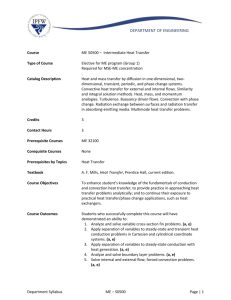
![Applied Heat Transfer [Opens in New Window]](http://s3.studylib.net/store/data/008526779_1-b12564ed87263f3384d65f395321d919-300x300.png)
